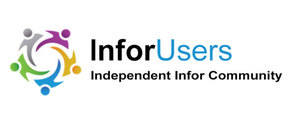Keeping Family Members in the Loop of Elderly Care
The boomer generation will test the capacity and flexibility of the existing US healthcare system over the next two decades. By 2030, Medicare is expected to cost approximately $259.8 billion. One way to reduce this cost is to use emerging digital technologies to help treat boomers more effectively in homecare settings. Digital technologies have proven to be an effective foundation for virtual care services during the pandemic. Telehealth and telemedicine, remote patient monitoring, and patient engagement solutions have created virtual-care environments that can compete with direct-care environments for many low-acuity care and episodic or chronic health monitoring programs.
Another key area for supporting boomers’ virtual care comes from the emerging digital smart home-assistant solutions from Amazon, Google, and Apple. These solutions are supported by leading speech recognition technologies that can interact with older patients in their homes to provide reminders about care appointments and medication refills as well as access to medical information relative to their healthcare conditions.
An emerging capability of smart home assistants is the expansion of their services to allow caregivers and families to use the devices to better track and evaluate the conditions of the elderly patients in their care. When remote caregivers or family members have the ability to check in with an elderly person and review that person’s compliance with scheduled appointments and medications, it reduces the stress of not knowing how that person is really doing. One example of this digital service is Alexa Together.
Grouping Alexa’s Digital Services to Fit Care Needs
Recently, Amazon updated their Alexa Together subscription service that connects aging users, called subscribers, to their caregivers and loved ones through Alexa. Subscribers can use the new Circle of Support feature to share updates with family members and caregivers. The Remote Assist control of the device can be shared with up to 10 designated caregivers. That function will let primary caregivers create and enable Alexa Routines for subscribers to use without the subscribers having to set up the Routines on their own. That improves the system’s adoption and use.
Circle of Support members can be added or removed by the subscriber or the original, primary caregiver. This ability strengthens support interactions with all caregivers. Amazon reports that more than a quarter of Alexa Together subscribers are in different states than their designated primary caregivers and nearly two-thirds are in different cities. This increases the value of Alexa Together for subscribers.
The Remote Assist tool allows the primary caregiver to set reminders (e.g., clinic appointments, medication refills), make lists, and otherwise interact with the device for standard information. Alexa Together can make Alexa Routines as well, allowing the primary caregiver to streamline tasks, such as turning off an alarm, turning on a light, and activating the subscriber’s coffeemaker, into a single command embedded in the older person’s smart device. Amazon will send the subscriber an email every time a Routine is set up on their device to keep them informed of their new routines.
Better Homecare Support Results in Better Care Outcomes
The ability to better support elderly care in home environments reduces healthcare costs while improving outcomes. Per a Cigna report, seeing a specialist averages $120 less for a virtual visit than an in-person visit, while a virtual urgent-care visit averages $141 less than being seen in an urgent care clinic. The same report concluded that many patients—including more than 75% of Cigna customers who had a virtual wellness screening in 2020—lacked a primary care physician (PCP). Two-thirds of those patients without a PCP learned they had a health condition because of their virtual screening. That enabled the patients to seek additional care before their conditions progressed, maximizing their health benefits while avoiding costs down the road.
Smart Home Assistants Advance Home Care for the Elderly
Smart home devices provided by Amazon, Google, and Apple continue to advance their functions to provide valuable support for healthcare services. Amazon and Google are the current leaders.
- Alexa Together: A caregiving service that connects a user’s Alexa app to their Echo devices.
- Google Home: A device that creates a routine of tasks that are activated to support healthcare.
- Apple HomeKit: A system that currently has limited healthcare abilities.
Success Factors
- Healthcare organizations should evaluate their patient populations to find patients who can afford and use smart home devices to support their healthcare.
- Healthcare providers should target populations of patients who are high risk or have chronic conditions to create a prototype for using smart devices to reduce care costs and improve care quality.
- Successful prototypes can be used to extend the smart-home-device services to all high-risk and chronically-ill patients who can effectively use the devices.
Summary
The boomer generation of the US will require healthcare organizations to deliver more convenient and affordable healthcare as this population has tremendous economic and political power. The COVID-19 pandemic exposed both caregivers and patients to digital technologies and solutions that demonstrated the ability to provide high-quality remote care services. The expectation of continued extensions and capabilities for remote care services has been established in the market. Payers and providers understand the need to incorporate remote patient care into their service portfolios.
Amazon, Google, and Apple are providing smart home assistant devices that will continue to extend and improve their current healthcare offerings. Fitness devices or watches can exchange information with these smart devices to gather remote patient monitoring information that can be shared with caregivers and improve outcomes and care quality. One of the key emerging features of these devices is the ability to allow other people to access and operate smart home device functions and communications for elderly people so that those elderly people can have peace of mind about their healthcare statuses.
Photo Credit: Enrique, Adobe Stock


